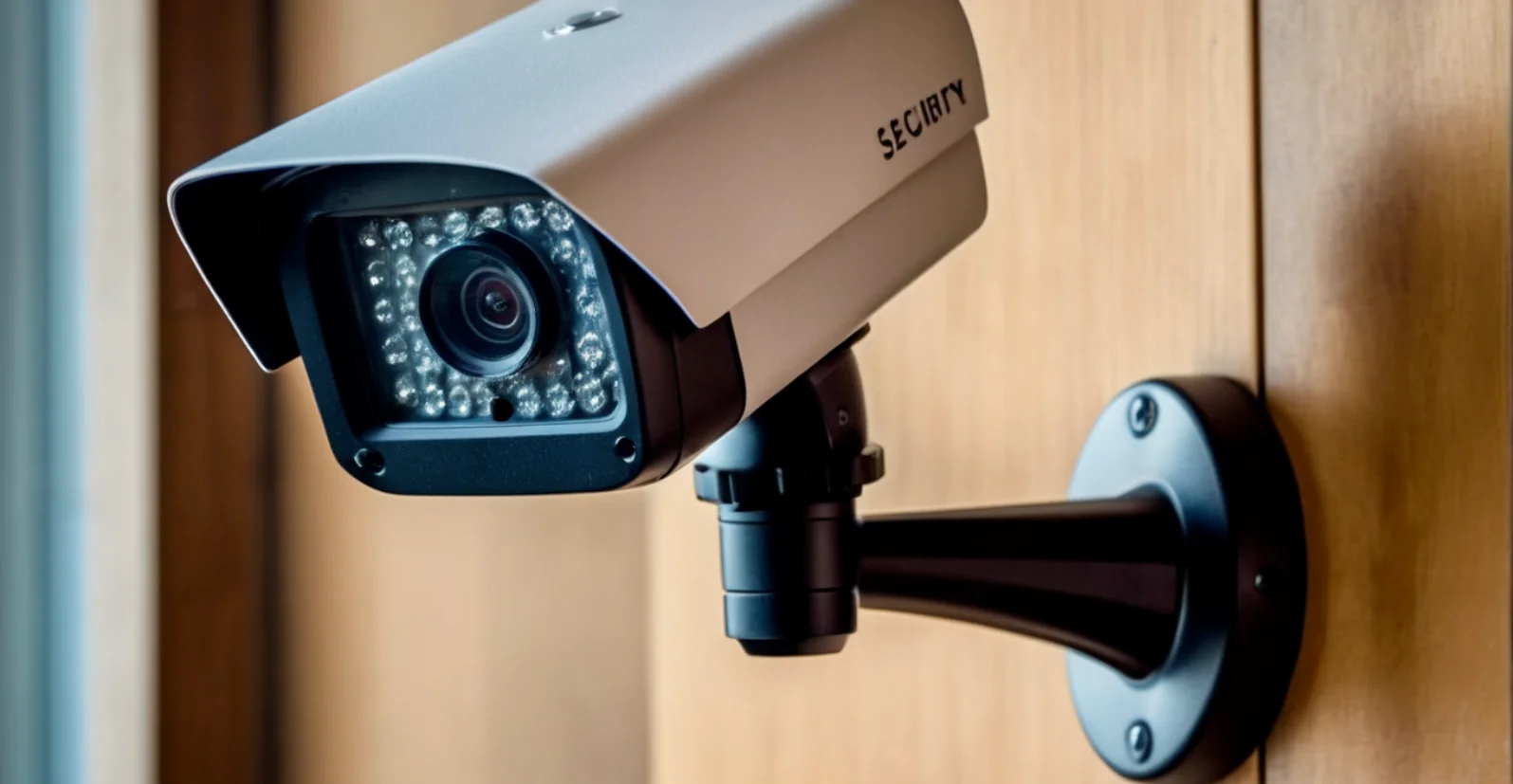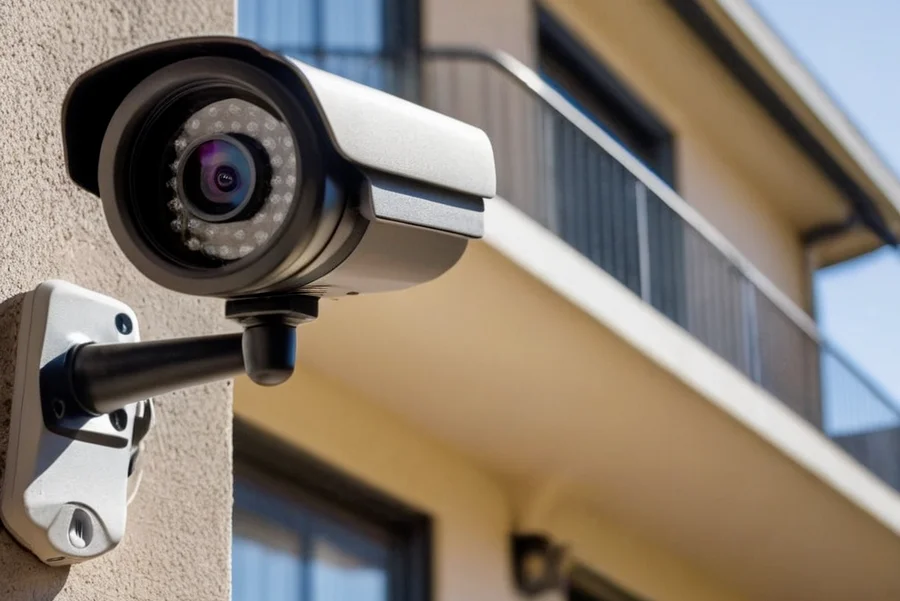Installing security cameras is one of the most vital steps hotels can take to protect guests, employees, and property assets. Video surveillance acts as an effective deterrent against crime while providing critical evidence if incidents do occur. But determining the appropriate number of cameras and optimal placement can be challenging for hotel properties.
In this guide, we’ll look at expert guidelines on camera counts based on hotel size, types of cameras to utilize, and key areas to focus surveillance on. With the right approach, hotels can deploy robust video monitoring without excessive costs.
Key Factors That Determine How Many Security Cameras a Hotel Needs
 The ideal number of cameras needed for effective video surveillance will depend on several important factors:
The ideal number of cameras needed for effective video surveillance will depend on several important factors:
Hotel Size – Larger hotels with more rooms, floors, entry points and public areas will naturally require more cameras to fully cover the property compared to a smaller boutique hotel.
Budget – Expanding camera coverage comes with increased costs for equipment, storage, and monitoring. Hotels need to balance surveillance goals with available security budget.
Camera Types – Specialized cameras like panoramic multi-lens units or PTZ tracking cameras can cover wider scenes with fewer units compared to standard fixed view cameras. This allows hotels to optimize coverage with fewer total cameras.
Area Priorities – Critical locations like front desk lobbies, entry/exit points, and parking garages need dedicated camera placement and potentially redundancies. Other areas may need minimal or no coverage.
Camera Resolution – Higher resolution 4K and 5MP cameras provide superior clarity and detail but have higher costs. Lower resolution units like 720p are more affordable but limit identification abilities.
Coverage Goals – More comprehensive video monitoring requires higher camera density with fewer blind spots. But full property coverage may be unrealistic or prohibitively expensive.
Local Laws – Hotels must ensure surveillance placement follows all local laws related to public/private spaces and disclosure requirements. Guest rooms and restrooms are generally prohibited.
Aesthetics – Visible security cameras may detract from the hotel’s ambiance and make some guests uncomfortable. Discreet placement helps balance coverage and experience.
Infrastructure – Wireless cameras are easier to install than wired PoE cameras but may have higher equipment expense and potential interference issues.
Using these factors to assess their needs and constraints, hotel security teams can develop an appropriate surveillance camera plan tailored to their specific property’s size, layout and priorities.
Industry Camera Count Guidelines Based on Hotel Size
As a starting point, security experts recommend these general camera count guidelines based on the size of hotels:
| Feature | Small Hotels (under 100 rooms) | Mid-sized Hotels (100-300 rooms) | Large Hotels (over 300 rooms) |
|---|---|---|---|
| No. of cameras total | 6-10 cameras | 15-25 cameras | 30-60+ cameras |
| Lobby/front entrance cameras | 2 cameras | 3 cameras | 4+ cameras |
| Rear/side entrance cameras | 2 cameras | – | – |
| Elevator bank cameras | 1 camera | 2 cameras per bank | 3+ cameras per bank |
| Stairwell cameras | 1 camera | 2 cameras per stairwell | 3+ cameras per stairwell |
| Hallway cameras | 1 camera per hallway (more for long halls) | 1 camera every 30-50 ft | 1 camera every 20-30 ft |
| Restaurant/bar cameras | – | 2 cameras | 4+ cameras |
| Conference/ballroom cameras | – | 3 cameras | 4+ cameras |
| Common area cameras | – | 1 camera per area | 2+ cameras per area |
| Parking lot/garage cameras | 1 camera | 4+ cameras | 6+ cameras |
| Exterior perimeter cameras | – | – | 4+ cameras |
These estimates provide a good baseline for camera counts which can then be adjusted based on the specific hotel’s public area footprint and surveillance goals. But camera totals alone don’t fully capture optimal surveillance placement.
Key Areas to Focus Hotel Security Camera Placement

Lobby/Front Entrance – The lobby area is a critical common area and first impression for arriving guests. Multiple cameras should provide overlapping views of the front desk, seating areas, and main entrance/exit doors.
Rear/Side Entrances – Cover employee and delivery entrances to catch unauthorized access and deter opportunistic theft.
Hallways – Monitor hallways on all floors to ensure guest safety and identify room service issues or disturbances. More cameras are needed for long hallways.
Stairwells – Capture internal stairwell traffic to deter nuisance behavior and crime.
Elevators – Protect guests and identify vandals. Place cameras to record activity at elevator doors on every floor.
Exercise Rooms – Prevent injuries and improper equipment usage.
Pool Area – Enforce safety rules and prevent after-hours use.
Parking Areas – Deter vehicle break-ins and theft. Capture license plate numbers.
Restaurant/Bar – Discourage fights, overconsumption and walkouts.
Conference Rooms – Safeguard equipment and prevent harassment issues.
Common Areas – Monitor safety and proper use of amenities like business centers, lounges, etc.
While guest rooms and restrooms are generally off limits, concentrating cameras in these key public areas based on risk provides sufficient coverage for most hotels.
Getting Full Value from Hotel Security Cameras
To get the most out of their investment in video surveillance, hotels must take full advantage of the camera capabilities:
- Centralize video feeds on an NVR for easy access and monitoring by authorized staff.
- Enable mobile remote viewing on phones and tablets so managers can conveniently check cameras from anywhere.
- Have designated security personnel actively monitor live feeds to identify suspicious activity.
- Review archived footage together with staff to identify persons of interest after incidents.
- Promptly provide relevant video evidence to law enforcement following criminal events.
- Post notices informing guests and the public of surveillance in common areas. This deters crime even without live monitoring.
- Consider outsourcing monitoring to a third-party provider to enable 24/7 active surveillance.
Determining hotel security camera counts takes careful consideration of property size, high-risk areas, camera types, and monitoring capabilities. But following industry guidelines combined with tailored placement focusing surveillance where it matters most will help hotels deploy smart, effective video monitoring to enhance safety. With the right coverage and active monitoring, hotels can get substantial value from their security camera investment for many years.
